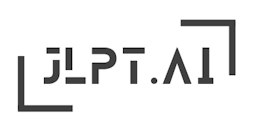

N3
音読み:seki
訓読み:mukashi
セキseki
むかしmukashi
Long ago, once upon a time
Imagine a setting where time goes backward, symbolizing a return to the past. In this past setting, characters and events from ancient times come to life.
The kanji '昔' is a moderately common character included in the JLPT N3 level. It is important to recognize its meaning and reading in order to understand written passages and answer related questions correctly.
昔々、あるところにおじいさんとおばあさんが住んでいました。
Once upon a time, there lived an old man and an old woman in a certain place.
むかしむかし、あるところにおじいさんとおばあさんがすんでいました。
mukashi mukashi, aru tokoro ni ojiisan to obaasan ga sundeimashita.
昔の友達と会うのは楽しい。
Meeting old friends is enjoyable.
むかしのともだちとあうのはたのしい。
mukashi no tomodachi to au no wa tanoshii.
昔の写真を見て、懐かしい思い出が蘇りました。
Looking at old photos brought back nostalgic memories.
むかしのしゃしんをみて、なつかしいおもいでがよみがえりました。
mukashi no shashin o mite, natsukashii omoide ga yomigaerimashita.